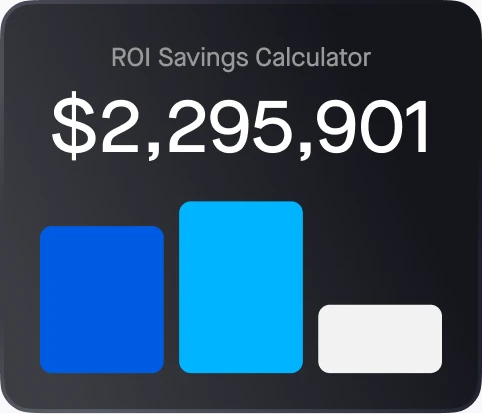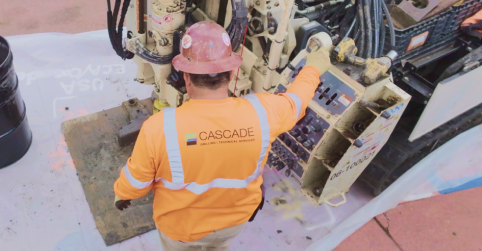Road safety is a top priority for businesses that rely on fleets, and collision avoidance systems (CAS) have emerged as game-changing technology. Designed to prevent accidents and improve driver performance, these systems use advanced sensors, cameras, and artificial intelligence (AI) to identify potential hazards and assist drivers in making safer decisions.
This guide explains how collision avoidance systems work, their benefits, and why they’re a must-have for modern fleets. We’ll also explore how the Motive AI-powered dash cams enhance driver safety and streamline fleet management.
What is a collision avoidance system?
A collision avoidance system is a safety feature that helps prevent or mitigate accidents by detecting potential hazards and alerting the driver. These systems use cameras, radar, and Light Detection and Ranging (LiDAR) to monitor a vehicle’s surroundings in real time. LiDAR is a remote sensing technology that uses laser pulses to measure distances and create detailed 3D maps of environments.
Some advanced collision avoidance systems go a step further by taking automated actions, such as applying brakes or steering adjustments, to avoid a collision if the driver fails to respond in time.
How collision avoidance systems work
Collision avoidance systems rely on a combination of hardware and software to detect and respond to potential threats, including:
- Sensors and cameras
- Cameras, radar, and LiDAR continuously monitor the vehicle’s environment, including other vehicles, pedestrians, and obstacles.
- These devices detect objects in the vehicle’s path and measure distances, speeds, and trajectories.
- Real-time processing
- The system’s onboard computer processes data from the sensors and cameras in real time.
- Using AI and machine learning, the system identifies potential hazards and determines whether a collision is likely.
- Driver alerts
- If a potential collision is detected, the system alerts the driver through visual, auditory, or haptic signals.
- This gives the driver a chance to take corrective action.
- Automated responses
- Advanced systems can take automated actions, such as emergency braking, throttle control, or steering adjustments, to prevent or minimize the impact of a collision.
Types of collision avoidance systems
Collision avoidance systems come in various forms, each addressing specific types of risks:
- Forward collision warning (FCW)
- Alerts drivers of a potential collision with a vehicle or object ahead.
- Automatic emergency braking (AEB)
- Automatically applies the brakes when a collision is imminent.
- Lane departure warning (LDW)
- Alerts drivers if the vehicle unintentionally drifts out of its lane.
- Blind spot detection (BSD)
- Monitors blind spots and alerts drivers of nearby vehicles.
- Pedestrian detection
- Identifies pedestrians in the vehicle’s path and provides alerts or automated braking.
- Rear collision warning
- Detects obstacles while reversing and provides alerts or automated braking.
Benefits of collision avoidance systems
Investing in collision avoidance systems offers a range of benefits for fleets:
- Enhanced driver safety
- Helps prevent accidents by providing timely alerts and automated interventions.
- Reduces the risk of injury to drivers, passengers, and other road users.
- Lower insurance costs
- Many insurers offer discounts for vehicles equipped with advanced safety systems.
- Reduced fleet downtime
- Preventing collisions minimizes vehicle damage and repair-related downtime.
- Improved fleet efficiency
- Fewer accidents mean lower costs, more uptime, and more reliable operations.
- Compliance support
- Collision avoidance systems help fleets meet safety and compliance standards by improving safety performance.
How Motive AI Dashcams enhance collision avoidance
At Motive, we take collision avoidance to the next level with our AI-powered dash cams. These devices monitor the road and analyze driver behavior to promote safer practices.
Here’s how Motive AI Dashcams stand out:
- Real-time alerts
- Drivers receive immediate warnings for unsafe behaviors like tailgating, distracted driving, or harsh braking.
- AI-powered insights
- The system uses AI to detect potential hazards and provide actionable feedback to drivers and fleet managers.
- Video evidence
- In the event of an incident, high-definition video recordings provide a clear view of what happened, helping fleets protect themselves from false claims.
- Driver coaching
- Fleet managers can use recorded footage and analytics to coach drivers on improving their performance and reducing risks.
- Proactive safety monitoring
- Motive’s platform provides detailed safety scores, allowing managers to identify high-risk drivers and take corrective actions.
Choosing the right collision avoidance system
When selecting a collision avoidance system for your fleet, consider the following factors:
- Comprehensive features: Look for systems that offer multiple types of alerts and automated responses.
- Integration capabilities: Choose a solution that integrates seamlessly with your existing fleet management platform.
- Ease of use: Opt for user-friendly systems that drivers can easily adopt.
- Scalability: Be sure the system can grow with your fleet.
- Vendor support: Partner with a provider that offers robust support and training.
Conclusion
Collision avoidance systems are essential for improving driver safety, reducing accidents, and improving fleet efficiency. By leveraging technologies like AI-powered dash cams and telematics systems, fleets can proactively manage risks and create a safer environment for their drivers and operations.
At Motive, we’re committed to helping fleets stay safe with cutting-edge safety solutions. Explore how our AI-powered dash cams and fleet management tools can transform your operations and protect your business.




